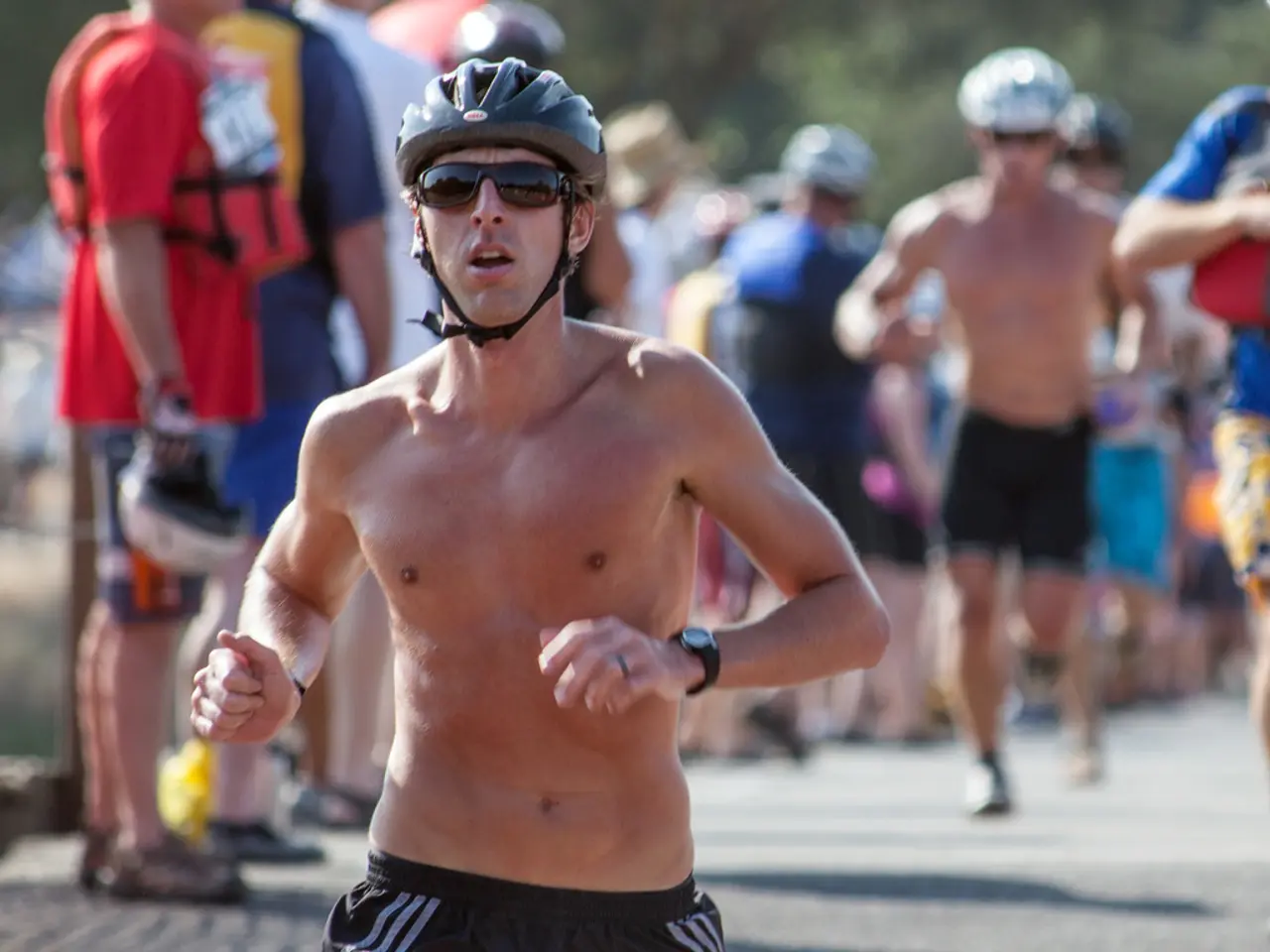Knee Issues in Runners: Exercises for Flexibility, Healing Strategies, Recovery Duration, and Further Insights
Runner's knee, also known as patellofemoral syndrome, is a common cause of anterior, or front, knee pain in adolescents and adults under 60. Affecting about 3-6% of people in the United States, this condition can be caused by overuse, muscle imbalance, or trauma.
To manage and prevent runner’s knee, it's essential to address muscle imbalances, improve knee stability, and correct poor biomechanics. Here are some exercises that focus on building strength and stability in the quadriceps, glutes, hips, and core muscles, which support proper knee alignment and reduce strain.
Glute-focused movements
Exercises like shoulder bridges, standing glute kickbacks, and clamshells are crucial for strengthening the gluteus medius and maximus, important for stabilizing the knee during running. These movements help promote balanced strength and control around the knee.
Quadriceps strengthening
Wall-supported squats and single-leg step downs are excellent for improving quad strength and eccentric control, which stabilizes the knee joint. These exercises help reduce the risk of injury and improve overall knee health.
Hip and core strengthening
Exercises such as single-leg Romanian deadlifts with reverse lunges, resistance band hip exercises, planks, and side planks build overall lower body and core stability to improve knee alignment. These exercises help prevent muscle imbalances and promote balanced strength during movement.
Functional leg exercises
Step-ups, squats, and lunges engage multiple muscle groups around the knee to promote balanced strength and control during movement. These exercises help maintain proper knee alignment and reduce strain.
In addition to these exercises, cross-training with low-impact activities like swimming, cycling, or elliptical training can help maintain cardiovascular fitness while reducing joint stress.
If pain persists after 8 weeks, imaging tests may be ordered to rule out osteoarthritis, patellar fractures, or other conditions. Alternative treatments, such as acupuncture, manipulation therapy, and electrophysical therapies like ultrasound or TENS, may also be considered, but their effectiveness is not well-researched.
The primary feature of runner's knee is pain in or around the front of the knee that worsens when flexed or during weight-bearing activities. Dull, aching pain around or behind the kneecap is the hallmark symptom of runner's knee, and it usually worsens after exercise and eases with rest.
In the recovery phase of runner's knee, the goal is to correct underlying issues. The RICE method (Rest, Ice, Compression, Elevation) is commonly recommended for the treatment of runner's knee, with the aim of reducing pain, improving patellar tracking, and returning the person to their previous activity level.
If the quadriceps muscles are too weak or too tight, they can cause the kneecap to track improperly, leading to friction and irritation of the cartilage under the kneecap. In some cases of runner's knee, a condition called chondromalacia patella may occur, causing the articular cartilage under the kneecap to soften and break down.
Prevention measures include strengthening leg muscles, wearing appropriate shoes, warming up before exercise, gradually increasing training, reducing activities that hurt the knees, and maintaining a moderate body weight. If knee pain does not improve with rest and home remedies, or if the knee is swollen, discolored, or hot to the touch, it's essential to consult a doctor.
Strengthening the gluteus medius and maximus through exercises like shoulder bridges, standing glute kickbacks, and clamshells is important for addressing the muscle imbalances that contribute to runner's knee. Wall-supported squats and single-leg step downs are beneficial for improving quadriceps strength and eccentric control, which can help prevent runner's knee by reducing the risk of injury and improving overall knee health. Incorporating functional leg exercises such as step-ups, squats, and lunges into a fitness routine can help maintain proper knee alignment during sports like football.




